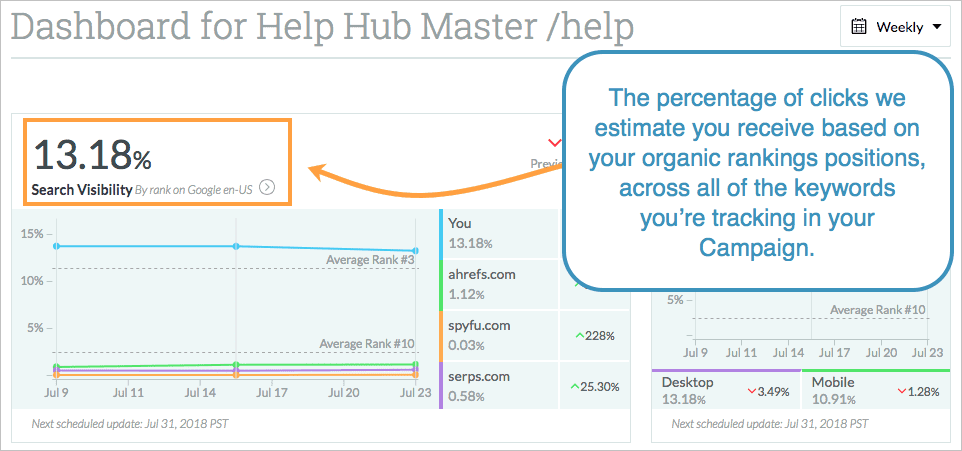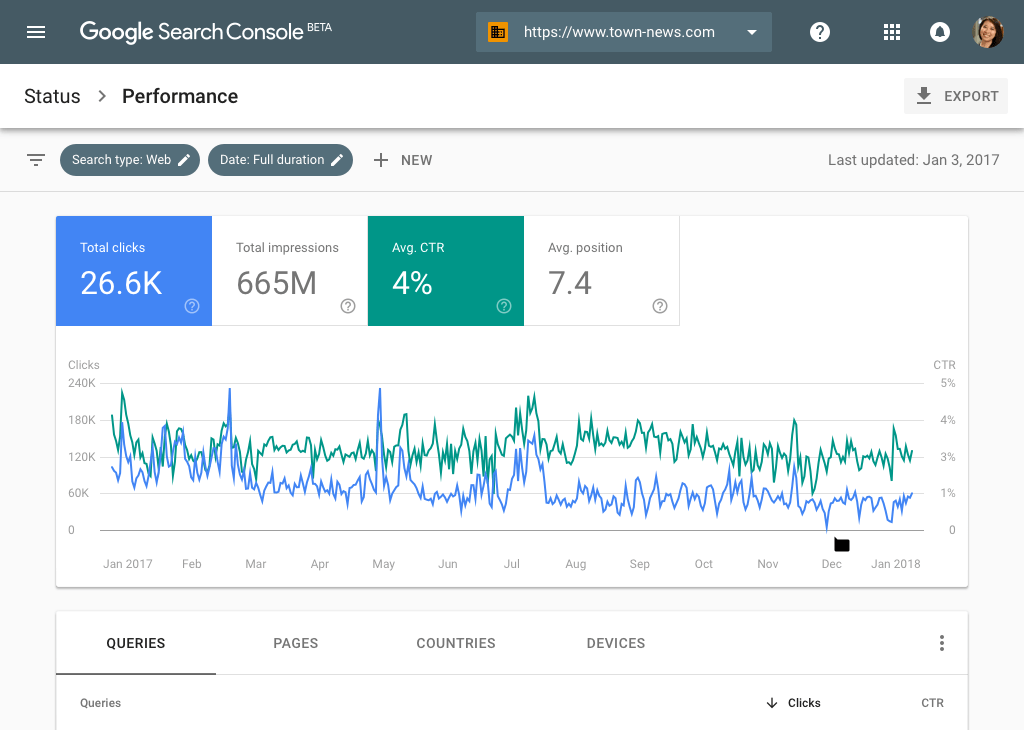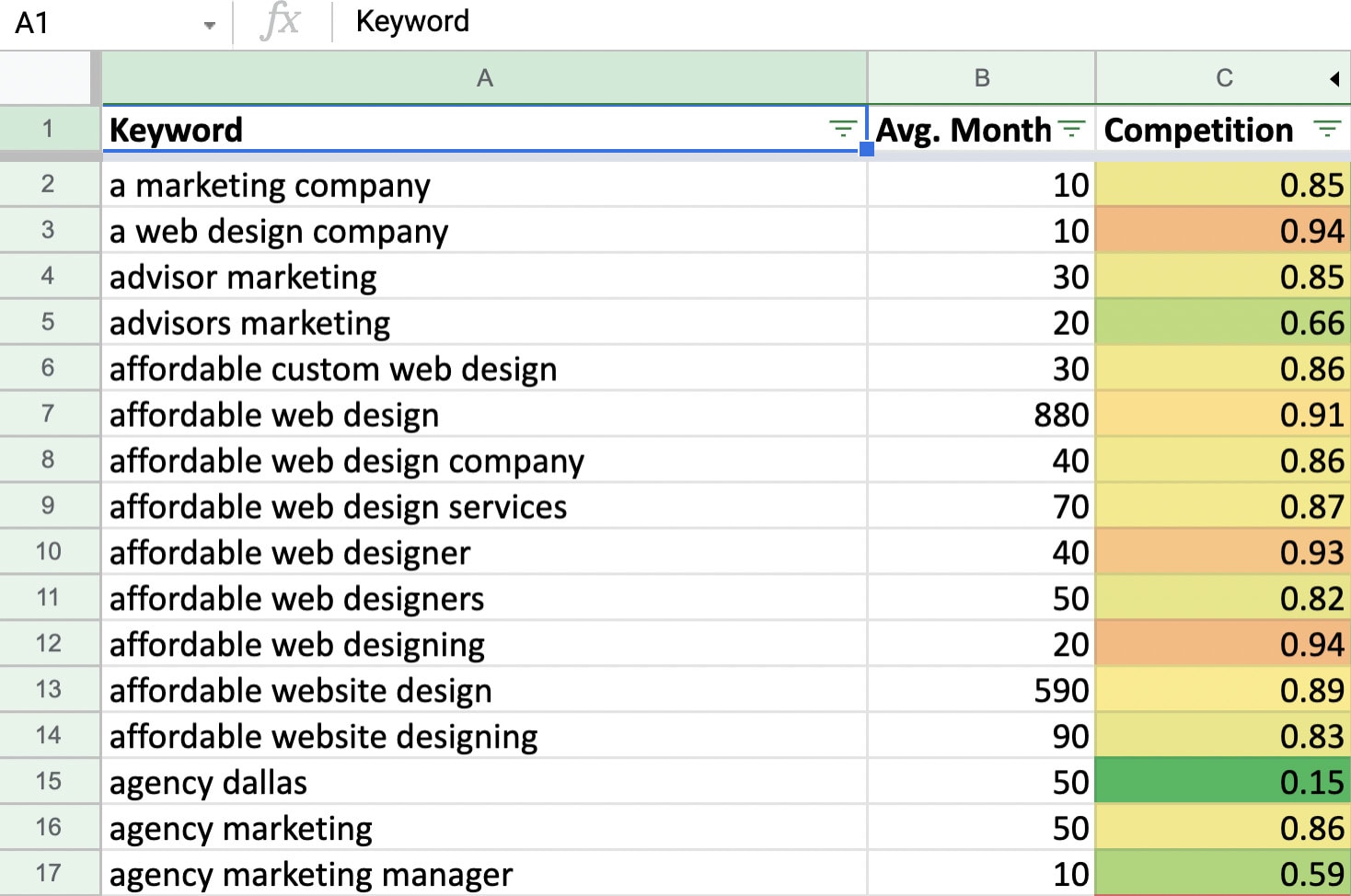Table of Contents
DIY SEO is possible. You don’t have to be an SEO professional to get your website to rank in Google where it can start generating traffic, leads, and sales. 60% of marketers say that inbound marketing (blogging, video, podcasting, infographics) and SEO (search engine optimization) are their highest quality source of leads. At the same time, other sources, like leads generating from cold-calling, cost 61% more than leads generated by an inbound marketing strategy.
While SEO can get complex and granular, there’s plenty of low-hanging fruit that can have a significant impact on your small business website’s visibility online. A simple do-it-yourself SEO campaign can lead to some big SEO wins more quickly than you’d think. Here’s what you need to do to start succeeding with SEO on your own.
Discover your SEO visibility
Before you begin any SEO strategy, you need to know how search engine algorithms are ranking your website online and how visible you are for the keywords you’re targeting.

SEO visibility is the percentage of search volume that your website gets for the keywords you’re targeting.
To calculate this, you:
- Find all the average rankings for all your keywords
- Find your estimated click-through rate (CTR) for each position
- Add all CTRs for all keywords and divide by the number of keywords you’re tracking
- This is your SEO visibility
There are a number of tools you can use to see what your website’s visibility is.
First, you’ll want to set up Google Search Console and Google Analytics. Google Search Console will show you what keywords you rank for (if any) and how high you rank for them. It will also show you your average CTR.
The image shows Google Search Console and the average rankings and CTR for keywords on a website. This data can be plugged into the formula to calculate your SEO visibility.

You can also use paid tools like Ahrefs and Moz to see your SEO visibility.
Beyond that, you can use tools like Google Analytics to see how much traffic you’re getting to your website.
Google Analytics will show you which of your pages are getting traffic and how much traffic they’re getting for any time period you choose. The image shows Google Analytics information, like number of page views and bounce rates.

These tools help you establish your baseline. You might learn that you have little traffic to critical pages, like your pricing page.
If you have no SEO strategy in place and you’re not creating useful, valuable content regularly, you likely won’t appear for any keyword searches (Google Search Console will show you what keywords, if any, you’re ranking for).
You also likely won’t have much traffic going to your website. The more traffic you get, the more leads you can generate, so low traffic can be an obvious sign that your SEO visibility is low.
Once you’ve got your baseline metrics established, you can dig deeper with an SEO audit to find specific ways to improve your organic search rankings.
Conduct an SEO audit
Using Google Analytics and Google Search Console, you’ve performed a basic SEO audit. Once that’s done, you’ll want to perform a more complex audit that helps you identify deeper issues (and strengths), like:
- How many backlinks you have and what opportunities there might be for link building.
- If you have any technical issues on your website (like your website loads slowly).
- If there are problems with your on-page SEO efforts (like not enough subheadings, no keywords in the title tag, or no meta description).
- Who your competitors are (not just in terms of competition for your target audience, but in terms of web pages that compete with yours).
- If you have content that ranks well and if Google is indexing your content.
- If your content shows up on search engine results pages (SERPS).
- What opportunities there are for creating content in your industry that has the potential to rank for long-tail keywords.
- What your site structure looks like and where you might need to add internal links (especially on your homepage and landing pages).
- How much organic traffic you’re getting and traffic goals are.
- What your target keywords for your industry should be.
- What type of digital marketing or content marketing strategy would be best for your business and your industry.
- If there are opportunities for other forms of digital marketing (like social media marketing or pay-per-click (PPC)) that can drive traffic to your website.
- Whether you have duplicate content.
- How easy your website is to use (does it provide a good user experience).
There are a number of paid and free SEO audit tools that will help you understand how each page on your website is performing in these and other areas.
Do keyword research
Keyword research is the process of identifying keywords related to your business that customers search for. Then, you’ll be able to create web pages that satisfy customer searches. Keyword research tools can help you with this.
For example, an ecommerce business that sells shoes isn’t going to optimize for keywords that have to do with pet supplies, but they might want to optimize for keywords related to socks or running.
A blog post on the 5 best shoes for running may attract customers who are interested in making a purchase.
You’ll also want to look at your existing pages and find keywords that it would make sense to optimize the page for.
When you’ve chosen a keyword research tool and you’ve come up with a number of keywords in your industry, create a spreadsheet of all the keywords you want to rank for along with other useful information, like the search volume for each keyword and the difficulty of ranking for that keyword.
Then you can brainstorm content that would go along with those keywords and put that into the spreadsheet as well. This is your keyword planner, which will guide you when you create a content strategy.
When you determine how you want to create content, who you’re targeting, and what your publishing schedule will be, you can begin the process of content creation: blogging, recording podcasts, or creating videos on your YouTube channel.
As you create content for each keyword, you may want to check off the keyword in your spreadsheet as completed. Here’s an image of what a keyword planner may look like.

Publish high-quality content
All SEO strategies revolve around content. When you have your keywords picked, and you’re ready to start creating content that targets those keywords, you need to do 2 things:
- Make the content useful and valuable
- Make the content high-quality
Content that’s useful and valuable is content that gives a searcher what they’re looking for. It “closes the loop,” which means that the searcher doesn’t return to the search engine results page because they’ve found something that answered their search query.
You have to consider, for each keyword, what would be useful for the searcher. What is the searcher looking for when they type in those keywords?
For example, for the keyphrase “best running shoes 2021,” the content you create needs to be exactly what it claims to be. The user needs to click on the page and find a list of the best running shoes for 2021.
That makes the content useful, but to make the content valuable, it needs to do more than list shoes. It needs to include…
- Explanations of what makes each shoe valuable
- High-quality images of the shoes
- The features and benefits of each shoe
- Links to where the visitor can purchase the shoe
This content is valuable to the user. It gives them everything they may want when they type “best running shoes 2021” into Google, making it more likely the loop will be closed. It’s comprehensive, and it fulfills the intent of the searcher.
In this case, the searcher has looked for a resource where they can compare running shoes, and you have given it to them, along with everything they need to take the next step in their buying process.
High-quality content also avoids black hat SEO techniques, which are just SEO techniques that go against the quality guidelines that Google and other search engines put out.
For example, you want to avoid keyword stuffing, which is when you put the target keyword phrase into your content too much and in ways that sound unnatural. Private blog networks, paid links, and gateway pages, are just a few examples of black hat strategies to avoid.
Build your backlink profile
When Google and other search engines determine how to rank your content, they look at a number of ranking factors. While there are hundreds or thousands of ranking factors, you can focus on a few of the most important ones.
Creating high-quality content that satisfies search intent is one important ranking factor. Another is how many links from other websites you have — these are known as backlinks.
Backlinks are a major ranking factor and have been for a long time, so you’ll want to generate as many backlinks from high-quality sources as you can.
There are a number of strategies for getting backlinks to pages on your website.
- Creating high-quality content – If your content is high quality, people are more likely to link to it as a source. High-quality content naturally attracts backlinks.
- Writing guest posts for other blogs – You’ll insert links to your own content into the blog posts that go on the other blog. These count as backlinks. You’ll also gain access to another business’s audience.
- The broken link strategy – You search for broken links on other websites using broken link checkers. You can then email the webmaster for the website and suggest replacing the broken link with a link to your content.
- Post regularly on social media – When your content shows up on social media, it provides opportunities for earning backlinks. Though social media links don’t count as backlinks, higher social engagement is correlated with higher rankings.
Improve site infrastructure
Technical SEO has to do with improving your website’s infrastructure to make it easy for both crawlers and users to access and understand.
Depending on how you’ve built your website, some aspects of technical SEO will be simple to implement—if they’re not already implemented for you.
Site speed and mobile-friendliness
Two major ranking factors for search engines include your website’s page speed and its mobile-friendliness, both of which are usually taken care of automatically to some degree by your host and your website builder.
- Page speed – How quickly your website loads. 37% of visitors bounce when your site takes 5 seconds to load, which means they leave your website, possibly never to return.
- Mobile-friendliness – Your website should have readable text and easy-to-see images/videos when it loads on any device, including a smartphone, a tablet, and a desktop computer.
Fortunately, most website builders — including WordPress, Wix, Weebly, and SquareSpace — automatically make your website mobile-friendly.
Page speed is determined by a number of factors. If you keep your images small and choose a good website host, you’ll likely have a website fast enough to allow your content to improve your search engine rankings.
However, there are a number of other ways to improve site speed that sometimes take a significant understanding of technical SEO to implement properly.
XML sitemap and schema
Another thing you’ll want to implement is an XML sitemap. An XML sitemap is used by crawlers to see what pages exist on your website for indexing purposes. If you use a plugin like Yoast, you’ll have an XML sitemap automatically generated for your website.
You can also use an XML sitemap generator.
Schema markup is another important addition to your site. Schema is a way of tagging your content so that search engines can easily understand what your content is. For example, schema will tell Google that a blog post is an article and that a video is a video.
This may sound simplistic, but search engines can have difficulty understanding what your content is, so using schema makes it an easier process and gives your content a better chance of ranking quickly. It also improves the likelihood that your content generates rich snippets, which are bigger, more engaging search listings complete with features like reviews, ratings, images, and more.
There are plenty of plugins for WordPress available that add schema to your website, and many website builders like Wix and SquareSpace will automatically add schema to your website.
Technical SEO tools
There are also many tools you can use to check and see if your website is meeting technical SEO requirements.
- You can check the speed of each page on your website using PageSpeed Insights.
- You can add schema to your website using Google’s Structured Data Markup Helper.
- You can check if your website is mobile-friendly using the Mobile-Friendly Test Tool.
If you have a storefront, you’ll also want to set up Google My Business and Bing Places for Business. Though not exactly technical SEO (these are local SEO tools), both play an important role in getting your business found on both Google and Bing.
Because technical SEO can get complex fast, you may want to work with an SEO expert to ensure your website performs at its best.
DIY SEO tools
There are a number of SEO tools and plugins that can help you with your DIY SEO goals.
- Yoast — the most all-encompassing and most famous SEO plugin for WordPress. Helps with keyword optimization, creation of XML sitemaps, adding schema to your website, and more.
- Moz Pro — one of the biggest and best all-in-one SEO suites available, Moz includes a keyword research tool, a rankings tracking tool, a site audit tool, a page optimization checker, a link building tool, and more.
- Semrush — another all-in-one SEO tool that helps with everything from keyword research and on-page SEO audits to rank tracking and local SEO optimization.
- Ahrefs — a powerful all-in-one SEO toolset with a site explorer, a keyword research tool, a rank tracker, and more.
- BrightLocal — an all-in-one local search platform that helps improve local SEO and includes an online presence auditor, easy-to-understand reports, a citation builder, a reputation manager, and more.
- Technical SEO Testers — these tools (there are over a dozen) allow you to check numerous technical SEO aspects on your website. Though a little technical, they can at least give you a starting point to understand where your technical SEO issues may lie.
- GroupHigh—this backlink tool will help you connect with bloggers and influencers whom you can approach for guest blogging opportunities.
- Clearscope—this tool helps you optimize your content for keywords so that it’s more likely to rank.
Get a complimentary SEO audit
DIY SEO is possible, especially with these SEO tips. Of course, you get from SEO what you put into it. The more time and effort you invest in learning and implementing SEO, the more likely you are to results. If you don’t have the time or expertise to put a DIY SEO strategy in place, you may want to work with an SEO agency or SEO expert.
Want to see how you’re doing with SEO? Get an instant SEO audit below. Or, schedule a free consultation to see how intent SEO can boost search traffic revenue by 700%
